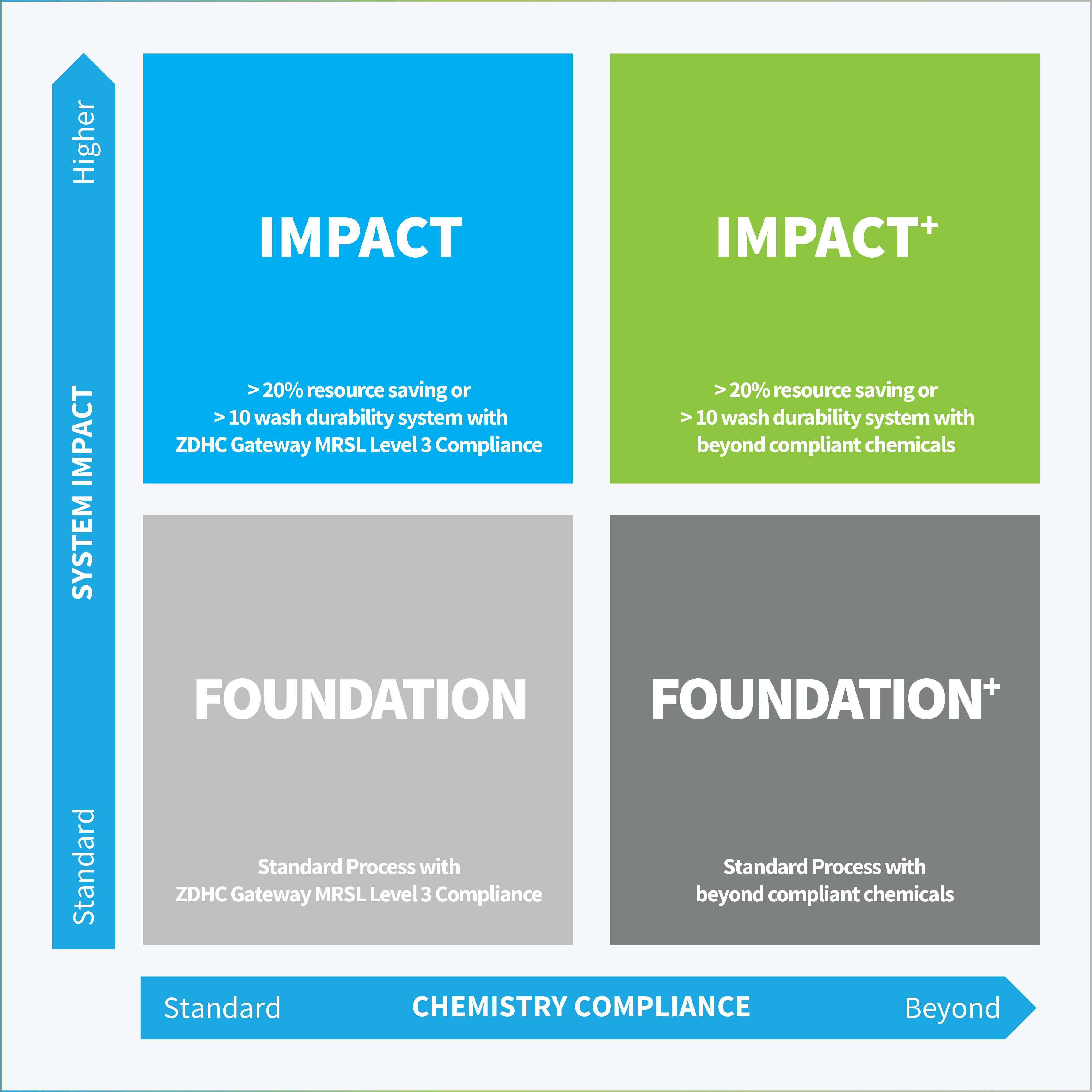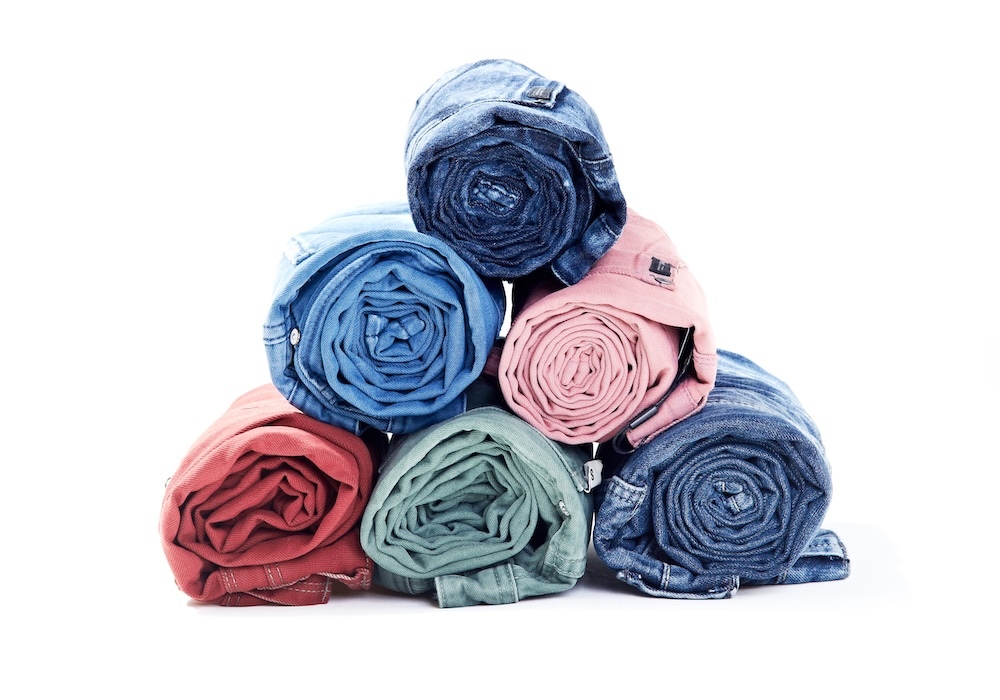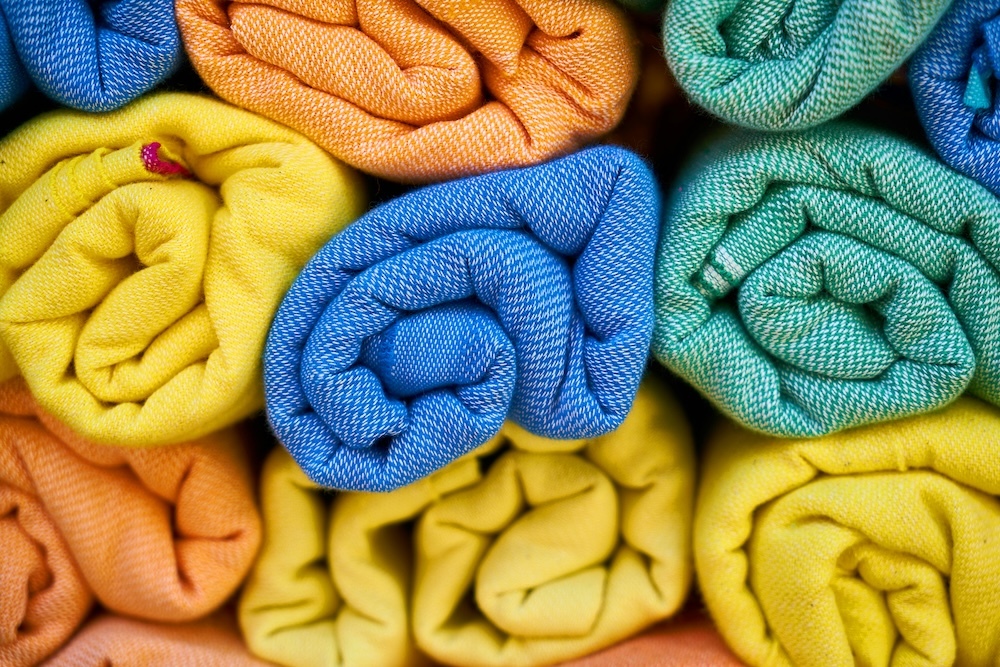- Textile Effects
- /
- SUPER SYSTEMS+
SUPER SYSTEMS+
Empowering a better tomorrow
Consumers expectations are changing. They are seeking garments and textiles that align with their values, offer comfort, and allow for personal expression, driving the textile industry towards a greater focus on sustainability, innovation, and a better understanding of consumers’ aspirations.

SUPER SYSTEMS+ are our end-use focused, fiber specific solutions that deliver process efficiency and intelligent effects, empowering mills and brands to make the right choices, achieve their sustainability targets and meet consumer demands.
Plug and Play
Systems that address your economic and environmental sustainability goals without additional investment.
End to End Solutions
Comprehensive and reliable solutions that significantly reduce resource use in pretreatment, coloration, printing and finishing.
Cleaner Chemistry
Stay ahead of the curve with a future-proofed portfolio leading the shift to cleaner chemistries through the removal of hazardous or restricted substances.
Intelligent Effects
Intelligent Effects engineered for enhanced functionality and circularity through durability.
Implementation Support
Benchmarking and implementation for measurable resource savings and productivity improvement.
The Safe Edge
Providing transparent, easily accessible product information for the value chain. 24/7 online access to product certificates and expert notes, ensuring transparency and compliance.
Key challenges facing the industry today
Water Consumption
The textile industry is known to have significant water consumption. It is in the industry’s collective interest to address this issue by adopting various water management strategies to reduce consumption, mitigate pollution, and contribute to a more sustainable and responsible industry.
Greenhouse Gases
Carbon intensity of textiles and garments varies across the supply chain, but emissions occur along the value chain, with the wet processing, yarn & fabric production and consumer use phases being the most significant contributor to GHG emissions.
Embracing Circularity
A circular economy moves away from the traditional “take, make and dispose” model to one that is regenerative by design. The goal is to retain as much value as possible from resources & products to create a system that allows for longer life, optimal reuse, recycling, and remanufacturing.
Complexity of Chemical Management
Chemical management is a critical issue due to the potential environmental and health impacts associated with the manufacture, use, and disposal of chemicals. Reducing environmental and health risks and keeping up with evolving regulations can be a very complex task for brands and mills.
Chemistry of tomorrow
As the industry embraces a cleaner and more transparent value chain, we are here to partner you in your journey in navigating the evolving regulatory requirements and to help you stay ahead of the curve with innovations that anticipate future regulatory changes and trends.
CLEANER CHEMISTRY (COMPLIANCE+): We aim to lower the environmental and health impacts of textile production and consumption. COMPLIANCE+ incorporates innovative technologies specifically developed to remove* harmful or regulated substances typically found in foundation level alternative products in the market
An ambition that goes beyond ZDHC Level 3 MRSL conformance with demonstrated cleaner alternatives.
*below the limit of detection


Align your sustainability goals with your choice of SUPER SYSTEMS+
We believe that we can reduce the environmental impact for the planet and people by improving resource savings in manufacturing and consumer use, adopting cleaner chemistries and enhancing durability of the finishing effects and colors.
Organized into four quadrants - Foundation, Foundation+, Impact and Impact+, the Impact Matrix addresses the key challenges facing the textile industry and guides you in making informed decisions about using cleaner chemistries, resource saving solutions in processing, improved durability in consumer use or a combination of all.
Our Super Systems+ is a comprehensive tool that guides you to achieve your sustainability goals without compromise.
Textile solutions that do good and feel good, for you and our planet
SUPER SYSTEMS+ is a core pillar under our ‘PLANET CONSCIOUS+’ vision that combines processing solutions and intelligent effects to bring measurable environmental impact and increased process efficiency. SUPER SYSTEMS+ are available for popular end-use segments, from denim to performance wear, and casual wear to home textile.
Discover more about our end-use focus solutions

Super Systems+
Cotton Knits
Cotton is great for comfort and style, but it can bring processing and compliance challenges. Our solutions make environmental and economic sense.

Super Systems+
Blue Denim
Blue Denim Blue denim is a classic, loved for its range of shades and wash-down effects. Our solutions boost both performance and productivity, all while driving sustainability.

Super Systems+
Black Denim
Versatile black denim is in high demand, but achieving deep shades that won’t fade has always been a challenge. New production processes are redefining what’s possible.

Super Systems+
Color Denim
Whether vibrant hues, pastels or earth tones, color denim is difficult to produce. But now you can meet today’s toughest standards and prepare for what’s next with confidence.

Super Systems+
Athletic Wear
Polyester fibers and blends elevate performance and comfort for athletes, with durability, safety and sustainability now in play too.

Super Systems+
Outdoor Wear
Delivering comfort, durability and weather protection in a fast-evolving compliance landscape is a challenge that demands constant innovation.

Super Systems+
Active Wear
Lightweight, stretchy, breathable and quick-drying fabrics are key for activewear, with odor and abrasion resistance built in. Bold colors that won’t fade or bleed seal the deal.

Super Systems+
Recycled Polyester
Switching to rPET over virgin polyester can help brands reduce greenhouse gas emissions, but mastering dyeing and finishing requires specialist expertise.

Super Systems+
Swimwear
You can now save manufacturing resources while delivering deep shades and striking contrasts on fabrics that resist fading and running.

Super Systems+
Towels (100% Cotton - continuous)
Sustainable towels in 100% cotton are on-trend, especially if they offer lasting colors and optimal softness, freshness and absorbency—all while using fewer resources.

Super Systems+
Sheeting (100% Cotton)
Cotton bed linens are light, breathable and soft, with an incredible drape. But brands increasingly also want them to be processed with a less water, energy, dyes and chemicals.

Super Systems+
Sheeting (Polyester Cotton)
Fabric that combines the durability and easy-care of polyester with the cool comfort of cotton is popular. But it can bring challenges when sustainable bedding is the goal.
How can we help you?
Contact our experts to find your best solution
Archroma are proud members and/or partners with the following organizations








